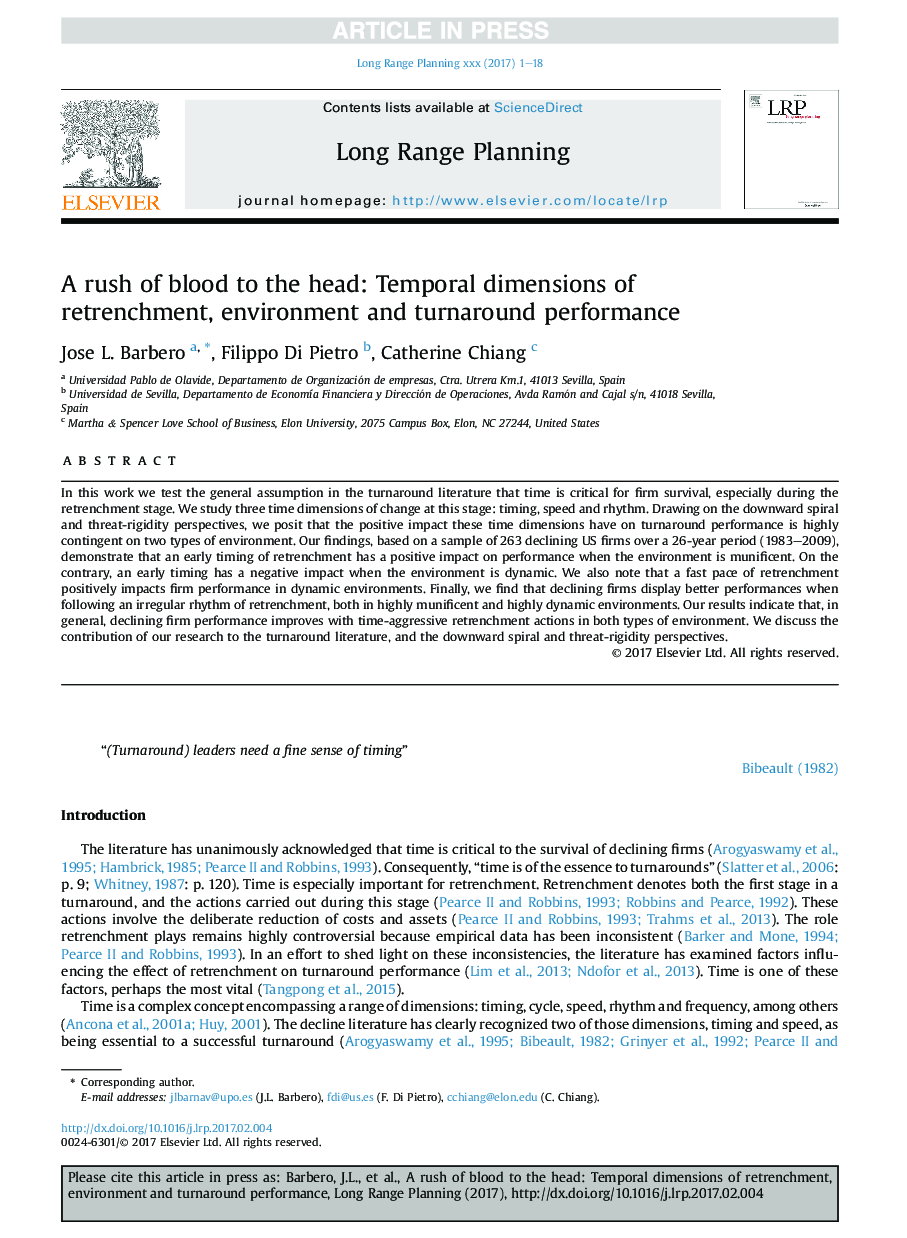| Article ID | Journal | Published Year | Pages | File Type |
|---|---|---|---|---|
| 7426919 | Long Range Planning | 2017 | 18 Pages |
Abstract
In this work we test the general assumption in the turnaround literature that time is critical for firm survival, especially during the retrenchment stage. We study three time dimensions of change at this stage: timing, speed and rhythm. Drawing on the downward spiral and threat-rigidity perspectives, we posit that the positive impact these time dimensions have on turnaround performance is highly contingent on two types of environment. Our findings, based on a sample of 263 declining US firms over a 26-year period (1983-2009), demonstrate that an early timing of retrenchment has a positive impact on performance when the environment is munificent. On the contrary, an early timing has a negative impact when the environment is dynamic. We also note that a fast pace of retrenchment positively impacts firm performance in dynamic environments. Finally, we find that declining firms display better performances when following an irregular rhythm of retrenchment, both in highly munificent and highly dynamic environments. Our results indicate that, in general, declining firm performance improves with time-aggressive retrenchment actions in both types of environment. We discuss the contribution of our research to the turnaround literature, and the downward spiral and threat-rigidity perspectives.
Related Topics
Social Sciences and Humanities
Business, Management and Accounting
Business and International Management
Authors
Jose L. Barbero, Filippo Di Pietro, Catherine Chiang,
